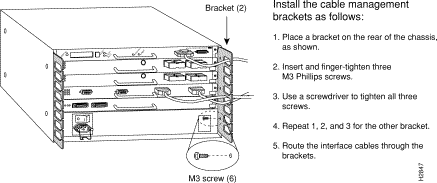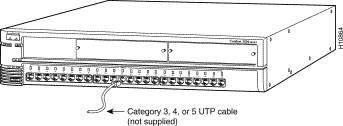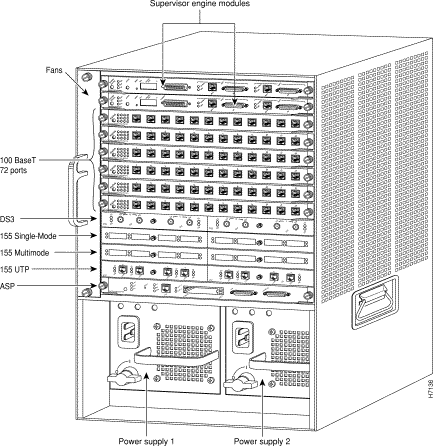|
JOIN THE BEST
MCITP Boot Camp,
MCSE
Boot Camp also CCNA ,
CCNP Certification
Boot Camp Training program.
100% Guaranteed
- Lowest Fees, Highest
Passing Rate.
MCSE Boot Camp Certification
MCITP MCSE and CCNA Certification Notes Series :
MCSE 2016 Boot Camp
:
Azure Boot camp :
CCNA / CCNAX
Boot Camp:
CCNA Boot Camp
Cisco Hierarchical Model:
For more information about this, please read our
separate tutorial titled "The
Cisco Hierarchical Model".
OSI Model:
The OSI model is a layered model and a
conceptual standard used for defining standards
to promote multi-vendor integration as well as
maintain constant interfaces and isolate changes
of implementation to a single layer. It is NOT
application or protocol specific. In order to
pass any Cisco exam, you need to know the OSI
model inside and out.
The OSI Model consists of 7 layers as follows:
|
Layer |
Description |
Device |
Protocol |
|
Application |
Provides network access for
applications, flow control and error
recovery. Provides communications
services to applications by identifying
and establishing the availability of
other computers as well as to determine
if sufficient resources exist for
communication purposes. |
Gateway |
NCP, SMB, SMTP, FTP, SNMP, Telnet,
Appletalk |
|
Presentation |
Performs protocol conversion, encryption
and data compression |
Gateway and redirectors |
NCP, AFP, TDI |
|
Session |
Allows 2 applications to communicate
over a network by opening a session and
synchronizing the involved computers.
Handles connection establishment, data
transfer and connection release |
Gateway |
NetBios |
|
Transport |
Repackages messages into smaller
formats, provides error free delivery
and error handling functions |
Gateway |
NetBEUI, TCP, SPX, and NWLink |
|
Network |
Handles addressing, translates logical
addresses and names to physical
addresses, routing and traffic
management. |
Router and brouter |
IP, IPX, NWLink, NetBEUI |
|
**Data Link |
Packages raw bits into frames making it
transmitable across a network link and
includes a cyclical redundancy check(CRC).
It consists of the LLC sublayer and the
MAC sublayer. The MAC sublayer is
important to remember, as it is
responsible for appending the MAC
address of the next hop to the frame
header. On the contrary, LLC sublayer
uses Destination Service Access Points
and Source Service Access Points to
create links for the MAC sublayers. |
Switch, bridge and brouter |
None |
|
Physical |
Physical layer works with the physical
media for transmitting and receiving
data bits via certain encoding schemes.
It also includes specifications for
certain mechanical connection features,
such as the adaptor connector. |
Multiplexer and repeater |
None |
Here is an easy way to memorize the order of the
layers:
All People Seem To Need Data Processing.
The first letter of each word corresponds to the
first letter of one of the layers. It is a
little corny, but it works.
|
Class |
Range |
Explanation |
|
A |
1-126 |
IP addresses can be class A, B or C.
Class A addresses are for networks with
a large number of hosts. The first octet
is the netid and the 3 remaining octets
are the hostid. Class B addresses are
used in medium to large networks with
the first 2 octets making up the netid
and the remaining 2 are the hostid. A
class C is for smaller networks with the
first 3 octets making up the netid and
the last octet comprising the hostid.
The later two classes arenít used for
networks. |
|
B |
128-191 |
|
C |
192-223 |
|
D |
224-239 (Multicasting) |
|
E |
240-255 (Experimental) |
A subnet mask blocks out a portion of an IP
address and is used to differentiate between the
hostid and netid. The default subnet masks are
as follows:
|
Class |
Default Subnet |
# of Subnets |
# of Hosts Per Subnet |
|
Class A |
255.0.0.0 |
126 |
16,777,214 |
|
Class B |
255.255.0.0 |
16,384 |
65,534 |
|
Class C |
255.255.255.0 |
2,097,152 |
254 |
In these cases, the part of the IP address
blocked out by 255 is the Net ID.
3COMís IP addressing tutorial is
just superior. It covers basic IP addressing
options as well as subnetting and VLSM/CIDR.
IPX/SPX:
IPX will also be an important issue to consider
in network management given the fact there many
companies still use Netware servers. There are
two parts to every IPX Network address - the
Network ID and the Host ID. The first 8 hex
digits represent the network ID, while the
remaining hex digits represent the host ID,
which is most likely the same as the MAC
address, meaning we do not need to manually
assign node addresses. Note that valid
hexadecimal digits range from 0 through 9, and
hexadecimal letters range from A through F.
FFFFFFFF in hexadecimal notation = 4292967295 in
decimal.
Sequenced Packet Exchange(SPX) belongs to the
Transport layer, and is connection-oriented. It
creates virtual circuits between hosts, and that
each host is given a connection ID in the SPX
header for identifying the connection. Service
Advertisement Protocol(SAP) is used by NetWare
servers to advertise network services via
broadcast at an interval of every 60 minutes by
default.
|
Routers and Switches
Routers

A Cisco 2501 router.

A Cisco 2514 router.
Cisco 2500 routers come with Flash EPROM technology for simplified software
maintenance. These systems support a variety of Cisco IOS software feature sets,
so you can choose a feature set that supports your specific protocol
environment. The software feature sets range from an IP and bridging-only to the
full array of Cisco`s software functionality, including APPN and RMON.
Mission-specific models contain less memory and less hardware functionality
to support a subset of protocols. Each mission-specific model can be upgraded to
full router capability by downloading a new Cisco IOS software feature set and,
if necessary, adding memory.
Cisco 2500 series models can be divided into the following categories:
- Single LAN routers-Models 2501, 2502, 2503, 2504, 2520, 2521, 2522 and 2523
- Mission-specific, entry-level routers-Models 2501CF, 2501LF, 2502CF, 2502LF,
2503I, 2504I, 2520CF, 2520LF, 2521CF, 2521LF, 2522CF, 2522LF, 2523CF and 2523LF
- Router/hub combinations-Models 2505, 2507 and 2516
- Access servers-Models 2509 to 2512 (refer to the "Cisco 2500 Series Access
Servers" section in the "Access Servers" chapter later in the catalog)
- Dual LAN routers-Models 2513, 2514 and 2515
- Modular routers-Models 2524 and 2525 (optional integrated DSU/CSU or NT-1)

A Cisco 7505 router.
The Cisco 7500 series includes the following routers: Cisco 7505, Cisco 7507,
Cisco 7513, and Cisco 7576. The Cisco 7500 series routers support multiprotocol,
multimedia routing and bridging with a wide variety of protocols and any
combination of Asynchronous Transfer Mode (ATM), Basic Rate Interface (BRI),
channel attachment, channelized E1, T1, and T3, Ethernet, Fast Ethernet, Fiber
Distributed Data Interface (FDDI), High-Speed Serial Interface (HSSI),
multichannel, Primary Rate Interface (PRI), Packet over OC-3, synchronous
serial, and Token Ring media.

A Cisco Catalyst 1900 switch.
The Catalyst 1900 switches provide up to 24 10-Mbps switched Ethernet
connections to 10BaseT-compatible devices (such as single workstations and
10BaseT hubs) and one 10-Mbps connection to an AUI. The switches also provide
two 100BaseT connections to servers and backbones.

A Cisco Catalyst 2820 switch.
The Catalyst 2820 series Ethernet switches provide 25 10-Mbps switched
Ethernet connections: 24 10-Mbps connections to 10BaseT-compatible devices (such
as single workstations and 10BaseT hubs) and one 10-Mbps connection to an AUI.
Switches with the optional Catalyst 2820 modules installed can provide 100BaseT,
FDDI, and ATM connectivity to servers and backbones.

A Cisco Catalyst 5500 switch.
The Catalyst 5500 switch provides high-density switched Ethernet and Fast
Ethernet, Token Ring, and Asynchronous Transfer Mode (ATM) switching for both
wiring closet and data-center applications, using unshielded twisted-pair (UTP)
multimode and single-mode fiber-optic cable. The Catalyst 5500 switch supports
switched 10-Mbps Ethernet, Ethernet repeater connections, and switched 100-Mbps
Fast Ethernet with backbone connections to Fast Ethernet, ATM, Fiber Distributed
Data Interface (FDDI), and Copper Distributed Data Interface (CDDI). Typically,
Catalyst 5500 Ethernet interfaces connect workstations and repeaters while the
Fast Ethernet interfaces connect to workstations, servers, switches, and
routers.
System Description
The Catalyst 5500 switch chassis has 13 slots. Slot 1, which is dedicated for
the supervisor engine II module, provides switching, local and remote
management, and dual Fast Ethernet interfaces. Slot 2 contains an additional
redundant supervisor engine II as a backup in case the first module fails. A
failure of the active supervisor engine II is detected by the standby module
which takes control of the supervisor engine II switching functions.
The remaining slots are available for any combination of Ethernet, Fast
Ethernet, FDDI/CDDI, and ATM. If a redundant supervisor engine II is not
required, slot 2 is available for any module. The Catalyst 5500 accepts
LightStream 1010 ATM modules in chassis slots 9 through 13. Slot 13 is a
dedicated slot, which accepts only the ATM Switch Processor (ASP) module.
|
Call Now : 800-519-
2267
|
Testimonials
|
If you're serious about getting certified,
this is the place to go. Definitely worth
their competitive price. Excellent
instructors, making it possible for anyone
to learn no matter what your level of
experience or knowledge.
Michael Doty
|
 |
Vibrant
offers
MCITP MCSE
certification
training
boot camp
for $5400
all inclusive,
instructor
led at
California
and
Baltimore.
Ref1
:
Ref2
:
link
:
resources
:
Tcp/ip
MCITP MCSE CCNA CCNP Boot Camp Schedule by Vibrant
boot camps
MCITP MCSE Boot Camp Proven
MCITP MCSE Boot camp Training
for MCITP MCSE Certification Fast
MCITP
MCSE CCNA CCNP Boot Camp Schedule by
Vibrant boot camps
MCITP MCSE Boot Camp - Proven Boot camp
for MCITP MCSE at Baltimore, Maryland
MCITP MCSE Boot Camp Payment Gateway to get
MCITP MCSE
Certification Fast!
CCNA 801 Boot Camp by Vibrant boot camps,
join MCITP MCSE camps
CCNA Boot Camp by Vibrant boot camps,
join MCITP MCSE camps
CCNP Boot Camp by Vibrant boot camps,
join CCNP camps
MCITP
MCSE Boot Camp compare Vibrant boot
camps, join MCITP MCSE camps
Comptia Security+ Boot Camp by
Vibrant boot camps, join MCITP MCSE camps
MCITP MCSE Boot Camp contact Vibrant boot camps,
join MCITP MCSE camps
MCITP MCSE Boot Camp course fees Vibrant boot
camps, join MCITP MCSE camps
MCITP MCSE Boot Camp FAQ by Vibrant boot camps,
join MCITP MCSE camps
MCITP MCSE Boot Camp location by Vibrant boot
camps, join MCITP MCSE camps
MCITP MCSE Boot Camp location by Vibrant boot
camps, join MCITP MCSE camps
MCITP
MCSE Boot Camp MCITP MCSE Certification also
MCITP MCSE Training Boot Camp
MCITP
MCSE Boot Camp by Vibrant boot
camps, join MCITP MCSE camps, MCITP MCSE Cert
MCITP
MCSE Boot Camp by Vibrant boot
camps, join MCITP MCSE camps
MCITP
MCSE Boot Camp by Vibrant boot
camps, join MCITP MCSE camps
MCITP
MCSE Boot Camp by Vibrant boot
camps, join MCITP MCSE camps
MCITP MCSE Security Boot Camp MCITP MCSE
14days all_incl MCITP MCSE Certifiation boot camp
MCITP MCSE Security Boot Camp by
Vibrant boot camps, join MCITP MCSE camps
MCITP MCSE Security Boot Camp by
Vibrant boot camps, join MCITP MCSE camps
MCITP MCSE Security Boot Camp by
Vibrant boot camps, join MCITP MCSE camps
MCITP MCSE Security Boot Camp by
Vibrant boot camps, join MCITP MCSE camps
MCITP MCSE Boot Camp Payment Gateway to get
MCITP MCSE
Certification Fast!
MCITP MCSE Boot Camp Refunds
MCITP
MCSE CCNA CCNP Boot Camp Register by
Vibrant boot camps
MCITP
MCSE Boot Camp Testimonials by Vibrant
boot camps
MCITP MCSE Boot Camp Payment Gateway to get
MCITP MCSE
Certification Fast!
MCITP
MCSE Boot Camp MCITP MCSE Certification
also MCITP MCSE Training Boot Camp
Microsoft Vista
Certification Boot Camp for Vista training boot camps
MCITP MCSE CCNA CCNP Boot Camp Register by Vibrant
boot camps
MCITP
MCSE Boot Camp all inclusive bootcamp
Vibrant boot camps, join MCITP MCSE camps
MCITP
MCSE CCNA CCNP Boot Camp Register by
Vibrant boot camps
|
![]() MCITP Boot camp
UK
MCITP Boot camp
UK
![]() MCITP Camp
Thailand
MCITP Camp
Thailand
![]() MCITP
RHCE Boot Camp India
MCITP
RHCE Boot Camp India